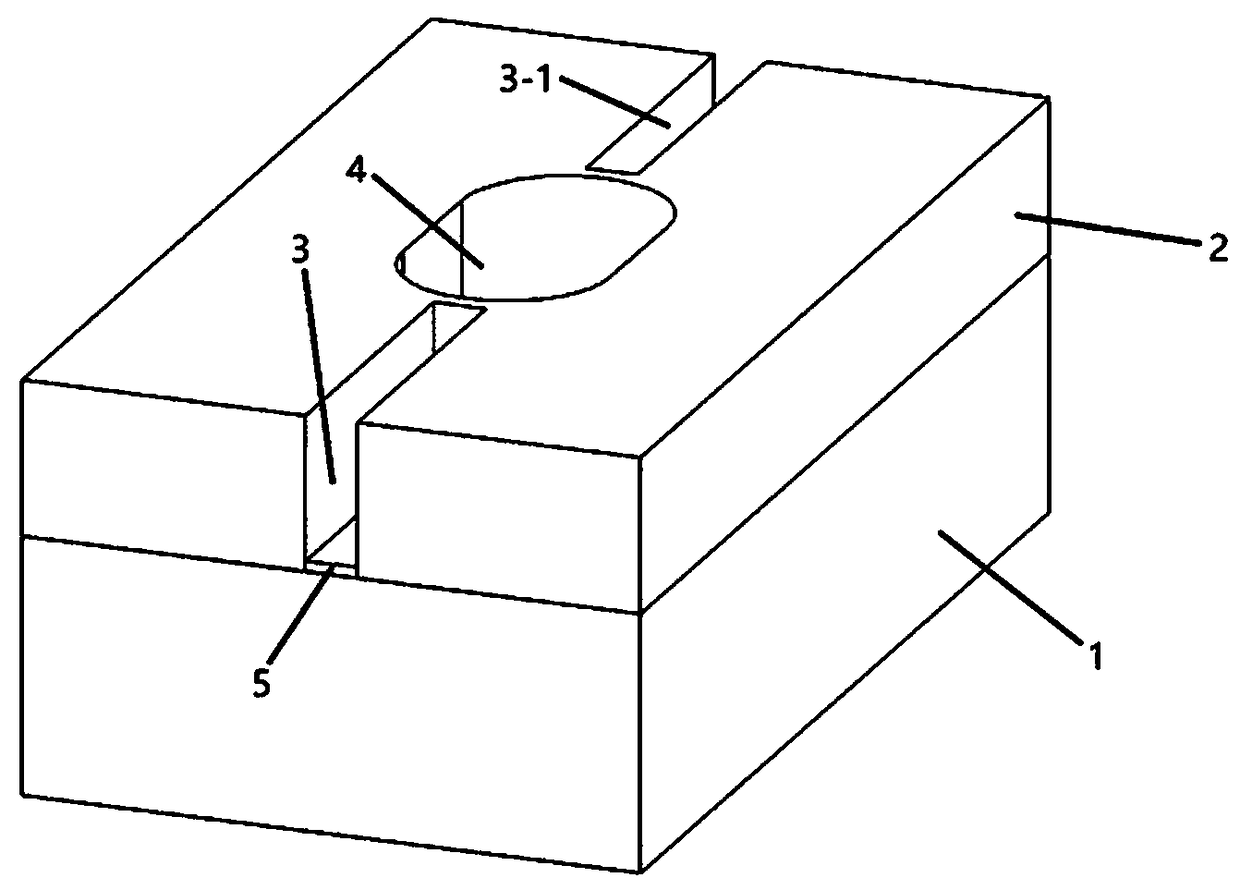High-sensitivity surface plasma resonant cavity sensor corrected through graphene
A high-sensitivity, plasma-harmonic technology, applied in the field of optical communication technology and sensing, can solve problems such as difficult mass production, complex sensor preparation methods, and difficulty in filling sensing media.
- Summary
- Abstract
- Description
- Claims
- Application Information
AI Technical Summary
Problems solved by technology
Method used
Image
Examples
Embodiment
[0023] refer to figure 1 , a high-sensitivity surface plasmon resonant cavity sensor modified by graphene, including a base layer 1 and a metal layer 2 stacked from bottom to top, and the metal layer 2 is provided with a resonant cavity 4 penetrating the upper and lower surfaces of the metal layer 2 , the perimeter of the resonant cavity 4 is symmetrically provided with a concave first straight waveguide 3 and a concave second straight waveguide 3-1, and the bottoms of the first straight waveguide 3 and the second straight waveguide 3-1 are all provided with single-layer graphene 5 It is tightly overlapped with the base layer 1.
[0024] The temperature sensing medium in the resonant cavity 4 is a liquid material with a high thermo-optic coefficient. In this example, it is sunflower oil. The length and width of the resonant cavity 4 can be adjusted. , wide size to carry out corresponding quantitative adjustments, so as to achieve the performance of optical filtering.
[0025...
PUM
 Login to View More
Login to View More Abstract
Description
Claims
Application Information
 Login to View More
Login to View More - R&D
- Intellectual Property
- Life Sciences
- Materials
- Tech Scout
- Unparalleled Data Quality
- Higher Quality Content
- 60% Fewer Hallucinations
Browse by: Latest US Patents, China's latest patents, Technical Efficacy Thesaurus, Application Domain, Technology Topic, Popular Technical Reports.
© 2025 PatSnap. All rights reserved.Legal|Privacy policy|Modern Slavery Act Transparency Statement|Sitemap|About US| Contact US: help@patsnap.com

